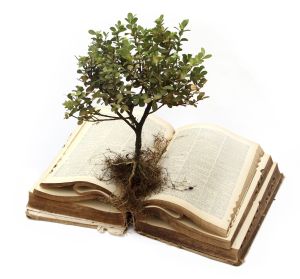Every story begins with an idea. Sometimes this idea comes to authors out of the blue. Sometimes a dream provides the spark. Sometimes “people watching” or an overheard conversation will trigger the thought. But no matter where it comes from, the idea kicks off everything else, like a seed from which the story grows.
These seeds can take different forms: a “what if” question (What if aliens walked among us?), a character (a modern-day Cleopatra), a theme (love is stronger than fear), or a situation (a single mother getting fired).
Seeds can then turn into a story in our mind. The roots create a foundation with setting and backstory. The branches twist and turn with subplots and turning points. And when the story is fully grown and leafed out with minor characters and layers, it can be difficult to remember that it all started with just the seed of an idea.
In a recent blog post, Bob Mayer talked about how this seed, which he calls the “kernel idea,” can help us come up with a query letter or determine which scenes stay or go. If we consciously remember the initial idea, it’s easier to keep things from going off-track.
But I most liked his observation about the “shiver.” What made you excited enough that you’d commit to spending time and energy to write down the story? That aspect is the emotional heart of your story.
And I think these two concepts—the “story seed” and the “shiver”—determine how successful we’ll be in sticking with our story through the hard work of completing the drafting, revising, and editing. We might even be able to use them to predict which ideas to toss into the great recycling bin in the ether and which to allow to come to fruition.
What’s Your Story Seed?
If you’re anything like I am, you have more story ideas floating around your head than you’ll be able to finish in a lifetime. So how do we decide which ones to pursue?
Can we tell from how easily the seed grows in our mind? After all, some ideas germinate and take off like a weed, infecting our thoughts until we get them written down. Others…not so much.
Does that mean we should avoid the ones that need a little encouragement or pruning as we take a more active role, like shaping a bonsai tree? Not necessarily.
What’s Your Story’s Emotional Heart?
Does your story have an emotional heart? As Bob points out:
A key to selling your book is being able to communicate this shiver to other people. To get them as excited as you were when you first began writing.
So now the question is, how passionate are you about the story? Do you care enough about these characters to stick with them through good times and bad? Through writer’s block and critique partner feedback?
If you don’t feel personally invested in your story, in the characters and their situation, you’ll have a harder time bringing that emotion into your story. And when the writing gets tough, it will be easier to give up on the story than to trudge through the work.
How Connected Are Your Story Seed and Emotional Heart?
If the core of your story idea is connected to the emotional heart of your story, it will be easier to see how the story should grow, and you and your readers will feel more passionate about the story (even through writer’s block and the toughest critique feedback). And if the seed and the shiver are one and the same, I think that’s when we have a “story of our heart.”
No matter how you feel about Stephenie Meyer and the Twilight phenomena, we have to admit she’s been successful in making her story mean something to her readers. They’re passionate about the characters and the plot.
Many people have tried to figure out why. I think it’s because her story seed and the emotional heart were one and the same.
On her website, she shares her story seed:
In my dream, two people were … in a meadow … discussing the difficulties inherent in the facts that A) they were falling in love with each other while B) the vampire was particularly attracted to the scent of her blood, and was having a difficult time restraining himself from killing her immediately.
Obviously, the story seed and emotional heart don’t need to line up exactly for every story. Not every story can, or should, be a story of our heart. But the more those two concepts are connected, the more successful we’ll be in overcoming the hurdles and developing the story.
I have a story of my heart, and like Stephenie, the seed for my story also started with a dream. A woman was choosing to die to protect a stranger she’d never met. As I woke, the questions started. Who was the stranger and why was he so important? What had led to that situation? And the most important question: Why—when I knew she was married and had a young son and a close-to-perfect life—why would she choose to do that? That last question is the emotional heart of my story.
My investment in the emotional aspects of this story sustained me through more revision and editing passes than I care to admit. And the clarity of that story seed carried me with ease through the intricate plotting dance.
This story has become more than just a story to me. It means something. It’s the reason I’m a writer today. I’ll continue writing other stories until I’m successful, so I’m not being stupid and refusing to work on anything else. But this story was worth writing even if it’s never bought.
What is the seed of your story? What is the emotional heart? How well do they mesh? What made you decide your story was worth writing? Do you have a “story of your heart”?

